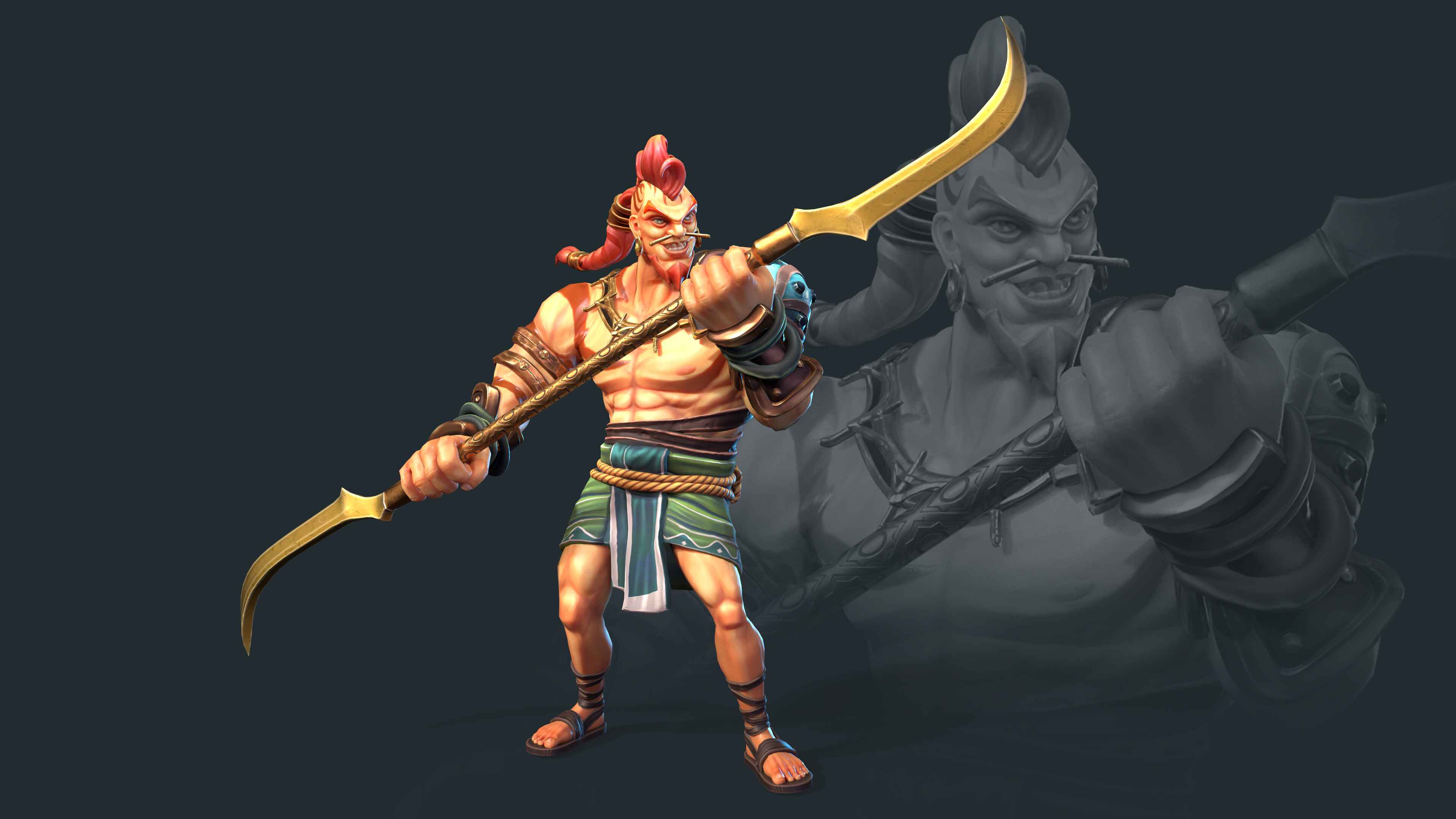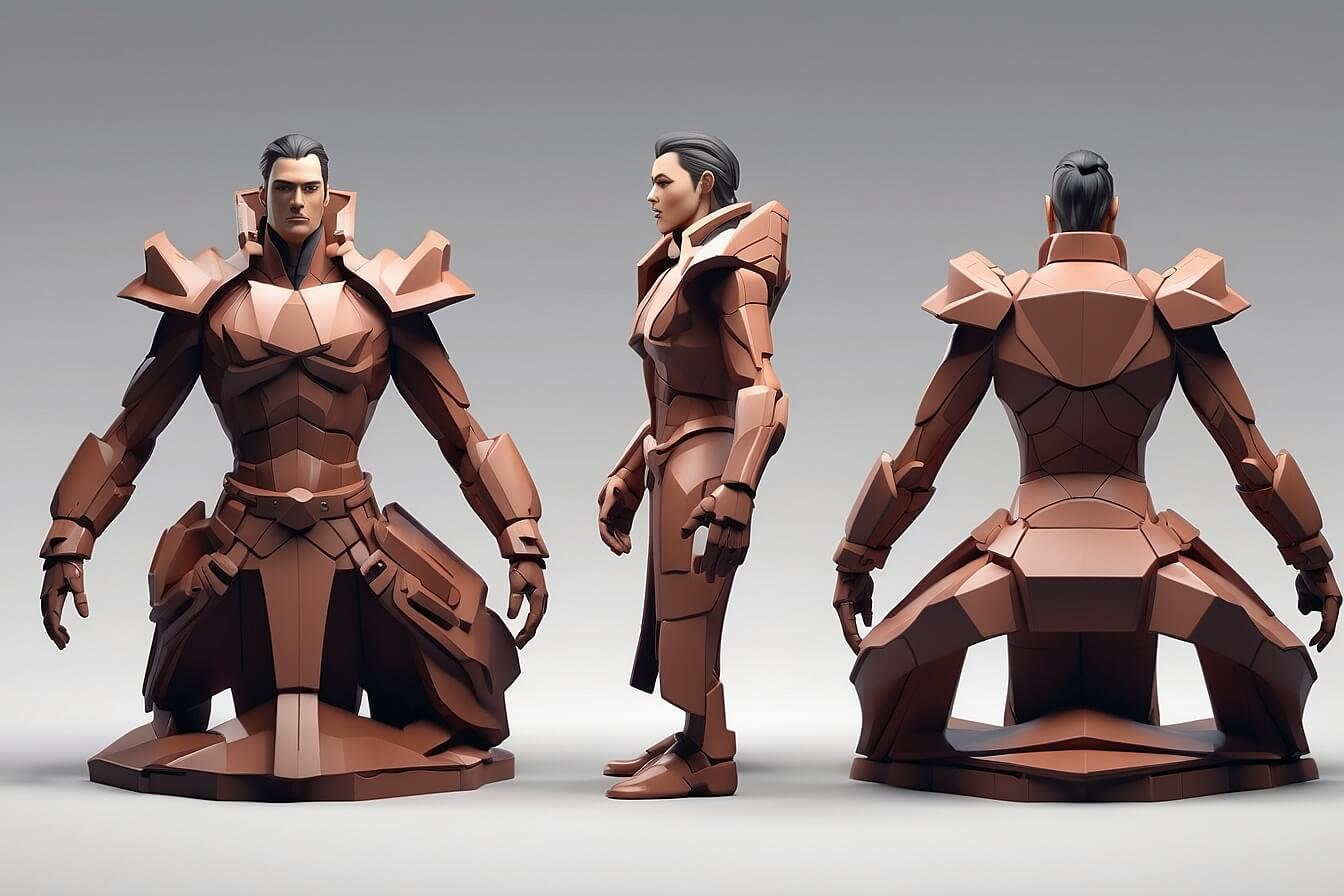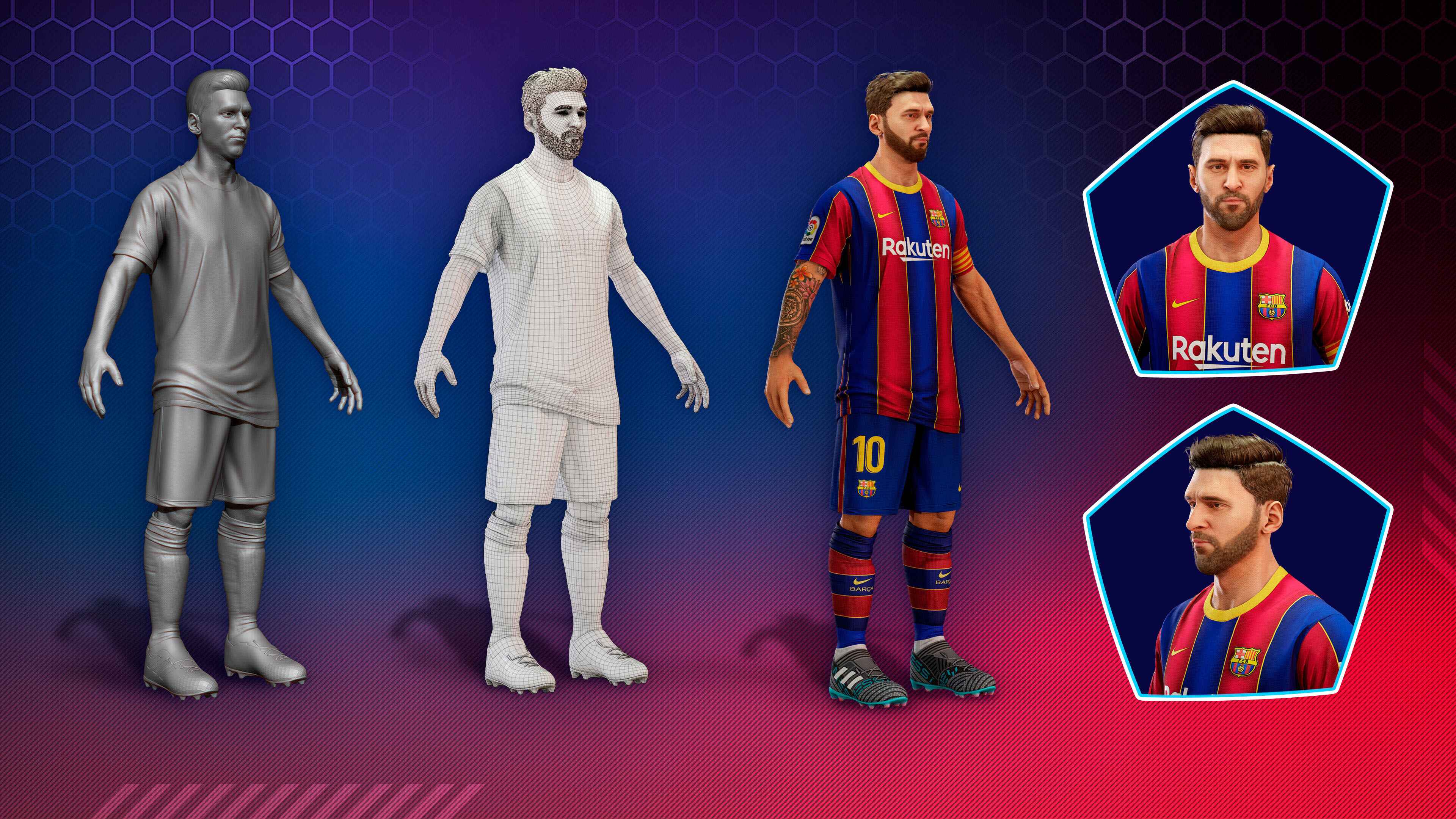3D character modeling is a foundational element in digital content creation, acting as a bridge that transforms imaginative ideas into tangible entities. This art form is essential in video games, animations, movies, and simulations, where characters do more than populate the scene. They drive the narrative forward and foster a deep engagement with the viewers or players. However, the cost of 3D character design service varies greatly depending on many factors.
This discussion is designed to equip developers, industry professionals, and enthusiasts with a deeper comprehension of the complexities of 3D character modeling cost estimation.
A 3D character model is a digital representation of a character in three dimensions, meticulously crafted to exist within virtual environments. Unlike their 2D counterparts, 3D models provide depth, volume, and the ability to be viewed and interacted with from any angle. This digital sculpting process involves using specialized software to create complex shapes, textures, and animations that mimic living beings’ or imaginary creatures’ appearance and movements. Creating a 3D character involves several stages, from conceptual sketches to detailed modeling and texturing, culminating in a lifelike entity capable of performing a range of actions and expressing emotions, enhancing the digital experience’s realism and engagement.

Understanding the types of 3D character models is crucial for gauging the creative effort involved and the potential cost implications in digital creation. Character models can broadly be classified into three categories based on complexity, each serving different purposes and requiring varying detail and development time.
Primary 3D characters are characterized by their simplicity and minimalistic design. They typically feature fewer polygons, basic textures, and limited animations, making them quicker to produce and less costly. These models are often used in mobile games, educational apps, or projects where intricate details are not paramount to the user’s experience. Despite their simplicity, they can still offer engaging interactions but are less suited to projects where a deep sense of immersion is desired.
Mid-complexity models strike a balance between detail and efficiency. They incorporate more sophisticated textures, better-defined geometries, and more advanced animations than basic models but do not require the intensive labor associated with high-complexity models. This category is well-suited for projects that seek a middle ground—offering visually appealing characters without the hefty price tag of more complex models. They are commonly found in indie games, virtual reality experiences, and digital marketing campaigns.

Complex 3D characters represent the pinnacle of character modeling, featuring high-resolution textures, intricate geometries, realistic animations, and, often, dynamic facial expressions. Creating these characters demands significant time, expertise, and resources, reflecting their higher cost. They are typically employed in blockbuster video games, feature films, and detailed simulations where character depth and realism are crucial to the narrative and user experience.
Several key factors influence the cost of 3D character modeling, each critical in determining the overall expense of bringing a character to life in the digital realm. Understanding these factors is essential for anyone who commissions 3D character models, as it allows for better budget planning and decision-making.
The complexity of the character, defined by the number of polygons, the intricacy of the design, and the required animations, is a primary determinant of cost. More complex models demand more time and skill to create, increasing costs.
Detailing refers to the texture, colors, and finishing touches that make a character appear lifelike. High levels of detailing require additional work in texturing and shading, which can significantly add to the cost.
The cost can also vary depending on the tools and software used. Some advanced software packages offer more sophisticated features that expedite the modeling process but come with higher licensing fees, potentially impacting the overall cost.
The model’s intended use—whether for a high-end video game, an animated movie, or a marketing campaign—can influence the cost. Models designed for commercial use or those requiring specific licensing may incur additional fees.
The project timeline is another crucial factor. A tighter deadline often requires more resources to meet the delivery time, leading to higher costs. Planning and allowing for a reasonable timeframe can help manage these costs more effectively.
The geographical location of the developers or studio significantly impacts the cost due to variations in living costs, currency exchange rates, and local market rates for such services. Developers in regions with higher living costs may charge more compared to those in areas with lower expenses. Here we have a list of hourly rates for 3D character developers from different countries:
| Country | Hourly Rate |
| US | $45 |
| Canada | $35 |
| UK | $25 |
| Eastern Europe | $18 |
| India | $18-$20 |
Finally, the experience and reputation of the artist or studio play a significant role in cost determination. Highly skilled professionals with a proven track record may charge more for their services, reflecting their expertise and the quality of their work.

Creating a 3D character is a meticulous process that unfolds in several stages, each contributing uniquely to the final model’s cost. Understanding these stages provides insight into the complexities of 3D character modeling and the factors influencing its overall expense.
The briefing stage lays the foundation for the character’s development. Here, clients convey their vision, objectives, and specific requirements for the character. The clarity and complexity of the brief can significantly affect the cost, as more detailed and unique requirements may necessitate additional research and planning.
During sketching, initial concepts and designs are drawn up. This creative process allows for the exploration of different character looks and poses. The time invested in sketching and the required revisions can impact the cost, as more iterations translate to more hours the artist spends.
Detailing involves refining the sketches with intricate features, such as facial expressions, clothing textures, and accessories. The level of detail desired can significantly influence the cost; greater detail requires more time and skill, particularly if the character has complex elements like elaborate costumes or detailed weaponry.
Modeling is the process of building the character in 3D space. This stage transforms the detailed sketches into a three-dimensional model through sculpting and polygon modeling. The complexity of the model, dictated by the character’s pose, anatomy, and attire, directly affects the modeling time and, consequently, the cost.
Texturing adds color, patterns, and surface details to the 3D model, making it look lifelike. However, the complexity of textures and the need for custom artwork can escalate the cost. High-resolution textures for close-up views, for instance, require more detailed work than textures seen from a distance.
Rendering is the final step, where lighting, shading, and camera angles are adjusted to create the character’s final images or animations. The quality of the rendering and the use of advanced rendering techniques can significantly influence the cost. High-quality renders with complex lighting and effects demand more processing time and computational resources.
Hiring a 3D character modeler is critical in bringing your creative vision to life, whether for video games, animations, or any digital media requiring high-quality character designs. The right talent can transform your conceptual ideas into engaging, lifelike characters that resonate with your audience. Below are some tips to guide you through hiring a 3D character modeler and ensure you find a perfect match for your project’s needs.
The field of 3D modeling is vast, with artists specializing in various niches—from architectural visualizations to intricate character designs. For character modeling, seek out professionals who focus specifically on character creation. These specialists will have a deeper understanding of anatomy, movement, and conveying emotion through digital characters, providing a solid foundation for your project.
Examine the modeler’s past projects to assess their expertise and consistency across different works. Consistency in quality and style is crucial, as it indicates the artist’s ability to deliver your project to a high standard. Please pay special attention to their character design, texturing, and rigging technique, as these elements are essential for creating realistic and expressive 3D characters.
A portfolio is a window into the artist’s capabilities, showcasing their best work and the range of their skills. Look for diversity in character designs and themes, demonstrating flexibility and creativity. Additionally, a well-documented portfolio with case studies or breakdowns can give you insight into the artist’s workflow and attention to detail.
Clear communication from the outset is critical to a successful collaboration. Discuss your project’s scope, timelines, and specific requirements in detail. This includes the level of detail expected, character concepts, and any particular animations or functionalities needed. Setting clear expectations will help avoid misunderstandings and ensure the final product aligns with your vision.
Before making your final decision, compare your top choices based on their portfolios, expertise, communication style, and pricing. Consider conducting a small test project or commissioning a trial piece to evaluate how well they understand your project’s needs and how smoothly the collaboration goes. This step can provide valuable insights and help you make a more informed choice.
Hiring the proper 3D modeling artists balances artistic skill, professional reliability, and personal compatibility with your project’s goals. By following these tips, you can enhance your chances of finding a talented professional who meets your technical and artistic requirements and brings your creative vision to life in a way that captivates and delights your audience. Remember, investing time in the selection process can lead to a more fruitful and enjoyable collaboration, ultimately contributing to the success of your project.